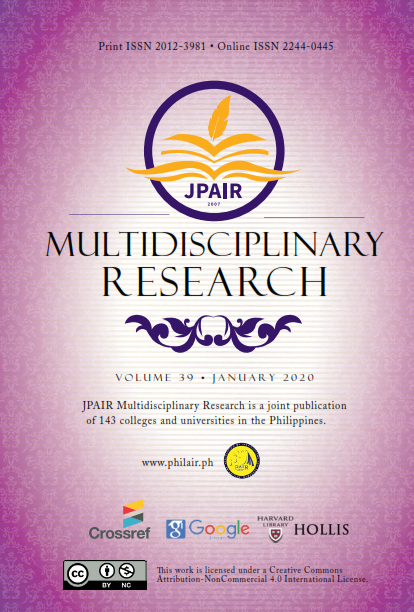Peace Education and the Promotion of Peace-building Initiatives through Health Care Programs in Conflict-Affected Areas in Mindanao
DOI:
https://doi.org/10.7719/jpair.v39i1.758Keywords:
Peace and Development, peace education and peace-building initiatives, descriptive – correlational design, Maguindanao and Cotabato Provinces, PhilippinesAbstract
For several years now, there has been a growing global consciousness on the close connection between health and peace. This study aimed to describe peace education and determine the promotion of peace-building initiatives through healthcare programs in conflict-affected areas in Mindanao. The study utilized the descriptive research design and correlation method using survey, interview, and Focus Group Discussion, to 250 survey respondents, eight informants, and 16 FGD participants from conflict-affected areas of Maguindanao and North Cotabato. Data were analyzed and interpreted using mean and multiple regression methods. The study found out that the delivery of the health care programs, the performance of the roles and responsibilities of the healthcare providers, and the use of peace mechanisms were moderately extensive. That peace education has significantly contributed to the promotion of peace-building initiatives in conflict-affected areas. However, the health care programs and health to peace mechanisms strongly influence peace education. The study concludes that health care programs have been delivered well, although there is still a need for improvement in terms of the performance of the roles and responsibilities of the health care providers. The use of peace mechanisms still needs to be intensified.
Metrics
Downloads
References
Cantallopez, E. (2010). Armed Conflicts Defacing and Reshaping Communities: The Case of Aleosan, North Cotabato. Unpublished Doctoral Dissertation. Retrieved from http://bit.ly/2OU8oSN
Downloads
Published
Issue
Section
License
Copyright (c) 2020 Elvira A. Baquial

This work is licensed under a Creative Commons Attribution-NonCommercial 4.0 International License.
Open Access. This article published by JPAIR Multidisciplinary Research is licensed under a Creative Commons Attribution-Noncommercial 4.0 International (CC BY-NC 4.0). You are free to share (copy and redistribute the material in any medium or format) and adapt (remix, transform, and build upon the material). Under the following terms, you must give appropriate credit, provide a link to the license, and indicate if changes were made. You may do so in any reasonable manner, but not in any way that suggests the licensor endorses you or your use. You may not use the material for commercial purposes.

























